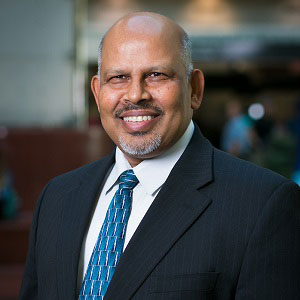Brussels Airport’s growth, resilience, and future operations
Posted: 10 November 2025 | Gabriel Higgins | No comments yet
Thomas Romig, COO at Brussels Airport, shares exclusively to International Airport Review, how the airport is positioning itself as a leading European hub.


Credit: Brussels Airport
Brussels Airport (BRU) has emerged from recent years of turbulence with renewed strength and ambition. Passenger traffic in 2024 rose by 6.4% to 23.6 million, and expectations are high that the figure will exceed 24 million this year. For Chief Operations Officer (COO) Thomas Romig, this growth reflects a carefully crafted strategy built around hub connectivity, sustainability and diversification.
The strong performance in 2024 was not accidental. According to Romig, the passenger increase was driven by a mixture of new long-haul routes, consolidation of existing services, and strategic partnerships. Brussels Airlines, the airport’s hub carrier, continues to play a central role. With its deep roots in sub-Saharan Africa, the airline has maintained a strong presence in the region, offering unique connectivity that few other European carriers can match.
But the important thing is to push as far as possible. Every step we take reduces our impact, and that is fundamental to our strategy.”
“Brussels Airlines has really focused on the African market, particularly sub-Saharan Africa,” Romig explains. “It’s a market that requires not just operational capability but also a level of engagement on the ground to maintain safety and reliability. Within the Lufthansa Group, Brussels has kept that niche, and it’s become a core strength for us.”
Join us live: Shaping the Next Generation of Hold Baggage and Air Cargo Screening
Join us live for an insightful webinar on 11th December at 14:00 GMT, in collaboration with Smiths Detection, as we explore the strategic balance of operational efficiency, regulatory compliance, and sustainability in high-volume security environments.
This session offers a focused look into future-proofing your security strategy.
Key learning points
- Cost Reduction: Strategies to minimize bag travel time while simultaneously reducing operational costs.
- Regulatory Roadmap: Insights into the next wave of regulatory changes and their impact on future investment decisions.
- Sustainable Systems: Practical approaches to building sustainability into security systems and lowering the total cost of ownership (TCO).
- Scalable Solutions: Real-world examples of scalable systems supporting current airport growth and preparing for tomorrow.
Register now for expert insights, case studies, and actionable strategies on operational efficiency!
That African connectivity is now increasingly linked with transatlantic travel. Partnerships with North American carriers such as United Airlines and Air Canada have created a viable hub in Brussels for passengers connecting between Africa and North America. This niche positioning has been a major factor behind the airport’s recent growth.
Meanwhile, the airport’s route development team has opened new links to Asia, including services to China. While European traffic has grown only modestly, it is long-haul expansion that has provided real momentum.
Romig acknowledges that sustaining this trajectory will require flexibility, especially in the face of political and economic uncertainties. The transatlantic market, for instance, could be affected by shifts in the political landscape of the United States. Nonetheless, he remains optimistic.
Brussels Airport’s long-term strategy rests on three pillars:
- Hub Connectivity: Strengthening Brussels’ position as a seamless transfer hub, particularly for intercontinental travel.
- Sustainability: Achieving net zero (Scope 1 and 2) carbon emissions by 2030, while aligning with the European Union’s Fit for 55 climate package.
- Diversification: Reducing dependence on aeronautical revenues by expanding real estate, commercial activities, and other non-aviation businesses.
This third pillar has been shaped by hard experience. The pandemic underscored the risks of over-reliance on passenger traffic, and diversification is now central to building resilience.
Sustainability
Arguably the most ambitious element of the strategy is the airport’s 2030 carbon neutrality target. While aviation itself is subject to longer-term technological and regulatory shifts, Brussels Airport is focusing on emissions under its direct control; namely Scope 1 and 2.
A range of measures is already under way. The airport will replace its fossil fuel-powered heating plant with an electric system, while solar panels continue to be deployed across the site. Ground equipment is being modernised, with new electric ground power units and pre-conditioned air units for aircraft. The airport’s vehicle fleet is steadily transitioning to electric, with the exception of specialist vehicles such as snow ploughs and firefighting trucks, although even here, Romig notes that electric solutions are starting to emerge.
“We know the target is ambitious, and perhaps even a little lofty,” Romig admits. “But the important thing is to push as far as possible. Every step we take reduces our impact, and that is fundamental to our strategy.”
Managing operational distruptions
Airports are complex systems, and disruptions are inevitable. In January 2025, Brussels Airport faced an unexpected challenge when Belgian air traffic control experienced a technical failure, forcing a temporary closure of national airspace. While the incident was beyond the airport’s control, Romig highlights the effectiveness of Brussels’ Airport Operations Centre (AOC) in managing such crises.
The AOC brings together all operational stakeholders under one roof, including the operations control centre of Brussels Airlines, an arrangement Romig believes is unique in Europe. “Our teams sit literally metres apart,” he says. “When there’s a disruption, they don’t pick up a phone. They turn around and talk to each other, or they walk into a crisis cell next door. That makes a huge difference.”
Looking ahead, Brussels is enhancing its planning capabilities through the Extended Airport Operations Plan (EAOP). This project connects the airport’s planning systems directly with Eurocontrol’s Network Operations Plan, allowing for end-to-end monitoring and predictive scenario modelling. The goal is to anticipate bottlenecks, assess knock-on effects, and re-optimise operations in real time.
Cyber-security
With Brussels hosting the European institutions and NATO, the airport is acutely aware of its visibility as a target for cyber-attacks. Romig confirms that the airport is under near-constant attack, often from state-sponsored actors. While he refrains from naming specific countries, he acknowledges that geopolitical realities mean such threats cannot be ignored.
To build resilience, the airport integrates its cyber team closely with operational and crisis management structures. Awareness-raising among frontline staff is also a key element, ensuring that cyber risk is treated as a shared responsibility.
Here, artificial intelligence plays a growing role. Where once monitoring networks required teams of analysts, AI tools can now sift through vast amounts of data and flag anomalies almost instantly. Human expertise is then applied to investigate and respond to issues requiring deeper judgement.
AI
Beyond cyber-security, AI is transforming day-to-day airport management. Brussels has been using AI-based passenger flow forecasting since as early as 2017. By analysing historical data, flight schedules and passenger behaviour, the system predicts passenger volumes through security checkpoints in intervals as short as five minutes. This allows the airport to staff security lanes efficiently, reducing queues and improving the passenger experience.
Ultimately, our job is to create the best possible hub operation while preparing for the future.”
The system has recently been upgraded to provide real-time adjustments, making it even more responsive to operational changes. “For me, that’s one of the most exciting uses of AI,” says Romig.
Other projects include the use of cameras to timestamp aircraft turnaround processes, and trials of autonomous units to transport baggage containers. Administrative uses of AI are also being considered, such as automating elements of tender documentation or contract drafting in a secure, closed-cloud environment.
While most of the development is currently outsourced, Romig foresees the need to bring AI expertise in-house. “At some point, having someone who can look across our operations and say, ‘Here’s where AI can make a difference’ will be invaluable,” he notes.
Balancing growth, resilience, and innovation
Brussels Airport’s trajectory underlines the changing role of major airports in Europe. No longer just transport hubs, they are complex ecosystems balancing commercial growth, technological innovation, sustainability commitments, and resilience against a wide range of risks.
For Romig, the vision is clear: Brussels must continue to grow as a hub, but not at the expense of environmental responsibility or operational resilience. By embedding sustainability into its strategy, diversifying its revenue base, and embracing AI and digital tools, the airport is positioning itself as a forward-looking leader in European aviation.
“Ultimately, our job is to create the best possible hub operation while preparing for the future,” Romig concludes. “That means being ambitious on sustainability, being resilient to shocks, and being open to innovation. It’s not always easy, but it’s the only way forward.”
About the Interviewer


Credit: Brussels Airport
Thomas Romig joined Brussels Airport Company as Chief Operations Officer in June 2024 running the end-to-end operations at the airport. He took on this role following four years with Airports Council International (ACI) in Montreal as Senior Vice President Safety, Security and Operations, where he was in charge of all advocacy efforts and programme areas related to airport operations acting as the primary interface with ICAO on topics ranging from Airside Safety, Airport Capacity and Slots, through to Facilitation and Security and across into Innovation and IT. Prior to this, he held a number of senior leadership positions at Geneva Airport in Switzerland, both in Safety and then Operations where among his multiple functions he was in charge of the development of the Airport Operations Center, the day-to-day management of airport operations and all the master planning activities. Over the years he has been strongly involved in ICAO and EASA regulatory activities as a representative of the airport’s community through ACI. He still very much involved in ICAO Regulatory affairs and developments and the nominated ACI Observer on the ICAO Air Navigation Commission and a multitude of other ICAO groups
Stay Connected with International Airport Review — Subscribe for Free!
Get exclusive access to the latest airport and aviation industry insights from International Airport Review — tailored to your interests.
✅ Expert-Led Webinars – Gain insights from global aviation leaders
✅ Weekly News & Reports – Airport innovation, thought leadership, and industry trends
✅ Exclusive Industry Insights – Discover cutting-edge technologies shaping the future of air travel
✅ International Airport Summit – Join our flagship event to network with industry leaders and explore the latest advancements
Choose the updates that matter most to you.
Sign up now to stay informed, inspired, and connected — all for free!
Thank you for being part of our aviation community. Let’s keep shaping the future of airports together!
Related topics
Air traffic control/management (ATC/ATM), Airlines, Airport crisis management, Airport leadership, Artificial intelligence (AI), Cyber-security, Operational efficiency, Passenger experience and seamless travel, Sustainability


















